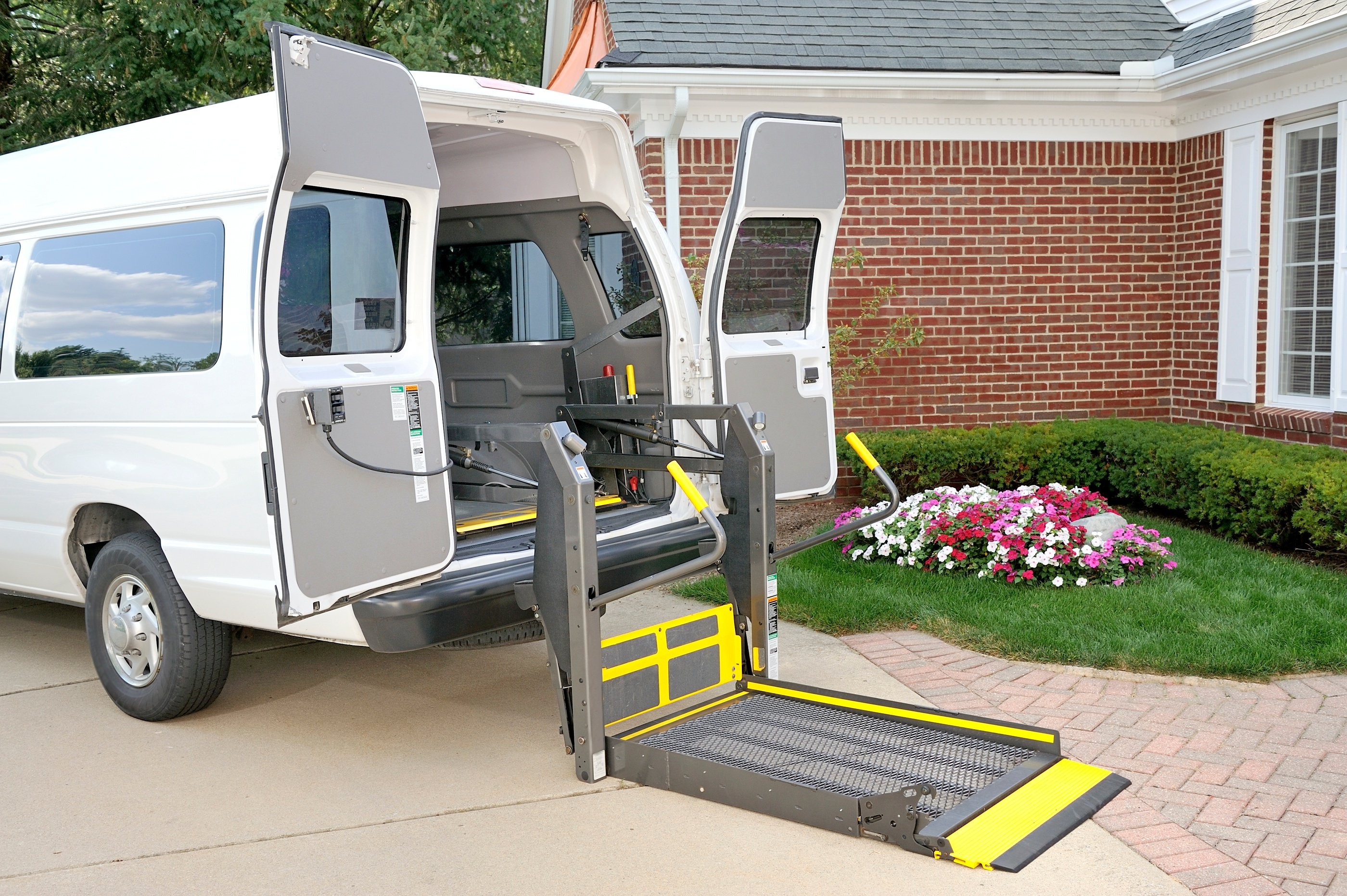WHAT IS NON-EMERGENCY MEDICAL TRANSPORT (NEMT) AND HOW CAN IT BENEFIT YOU?
Healthcare services are essential to every segment of the population. But some of our more fragile populations face transportation challenges to get to their essential medical appointments. Some must rely on family and friends or local community organizations to transport them. If these options become limited, Non-Emergency Medical Transportation (NEMT) can fill in the gap.
WHY DOES NEMT MATTER?

It's not only the vulnerable portion of our populations that can be affected. We could also be talking about someone who’s normally healthy enough to get around, but may be temporarily waylaid by an acute injury or surgery. Post-surgical patients aren't allowed to drive until cleared by their healthcare provider, even if the surgery didn't involve limbs or hands. Since surgery weakens muscles needed for driving a vehicle, and post-procedure pain medication may make driving illegal and unsafe, alternative arrangements need to be made. After all, getting to follow-up appointments is often crucial to recovery.
If you can imagine trying to board a public bus with a cast on your leg and arm, you probably see the types of challenges some riders might face. For many, driving their own car is out of the question. For these and many other challenges, NEMT is the answer.
HOW DO WE DEFINE NON-EMERGENCY MEDICAL TRANSPORTATION (NEMT)?
NEMT can be defined as a transportation service provided to individuals who are not in an emergency situation but need more assistance than a taxi service is able to provide. Service providers will be specially equipped to transport riders in wheelchairs, stretchers or with other special needs.
Non-Emergency Medical Transportation (NEMT) services are most often provided by booking travel through transportation brokers via specialized software which locates available transport providers and schedules the appropriate trip after the brokerage has verified eligibility for them to ride based on funding rules. Medicaid will sometimes pay for this type of service but not everyone has Medicaid coverage. In other cases, state and local programs, departments of aging, and hospital systems will fund NEMT transportation. With many demands on the public purse, these funders understand that it’s less expensive to provide the necessary transport to keep a person healthy than to treat them later once their medical issues have worsened.

HOW DOES NEMT WORK?
Non-emergency medical transport services are administered by trained NEMT brokers. Their job is to qualify riders, schedule and book rides, and match the requests for transport with an appropriate vehicle to accommodate the rider's needs, such as loading a wheelchair or mobility scooter onto and off of the vehicle with the client.
NEMT brokers also ensure that each of their transportation providers (and their drivers) have up-to-date licensing, insurance, and training, so clients are assured of receiving professional service.
For clients seeking NEMT services, a few simple steps are all it takes to get set up:
Benefits of investing in public transit
The client will make a quick phone call to the NEMT call center to give the broker the required information (the date, time, and location of transport, along with any pertinent qualifying data, such as Medicaid coverage or other payment option)
The client will make a quick phone call to the NEMT call center to give the broker the required information (the date, time, and location of transport, along with any pertinent qualifying data, such as Medicaid coverage or other payment option)
The broker then uses their specialized scheduling software to match requested rides with drivers and vehicles that can accommodate each transport request.
The broker then uses their specialized scheduling software to match requested rides with drivers and vehicles that can accommodate each transport request.
Following that, the broker then works to verify NEMT qualifications and payment options for the client.
Following that, the broker then works to verify NEMT qualifications and payment options for the client.
Once the NEMT trip is scheduled, the client meets at the designated time and place for pickup, and the NEMT broker takes care of the rest.
Once the NEMT trip is scheduled, the client meets at the designated time and place for pickup, and the NEMT broker takes care of the rest.
WHAT ARE NEMT BROKERS?
NEMT brokers use specialized software to find the right transport services, including providers with both standard vehicles as well as specialized vehicles, in order to cover every range of non-emergency need. Wheelchairs, mobility scooters, walkers, gurneys, and the entire realm of non-emergency medical equipment that a person may have should be manageable with these modern systems.
The software will also take into account the transportation costs that the provider will charge to the brokerage for that specific trip, the area of coverage that the provider works in, and the availability of drivers and vehicles at the time of the requested trip. Good scheduling systems will also have a built-in way to automatically shop these trips to providers offering them the final choice to accept trips or send them to another provider, based on the brokerage rules.
All of this is transparent to the person needing to obtain transport to a medical appointment. All they have to do is simply contact the transportation broker who will collect information on any special needs, book the trip at the time requested, and let the system do the rest.
HOW DOES NEMT SOFTWARE BENEFIT RIDERS?
NEMT software allows people with special transport needs to maintain their independence and avoid feeling like a burden to family or friends. This feeling of independence can provide a much greater sense of well-being, helping recovery and/or management of a chronic disorder.
NEMT broker software doesn’t just help the broker and their providers to manage client trips effectively. It also allows for efficient and timely trips for the clients through:
- the optimization of trip routes
- the tracking of both the vehicle itself and the driver's behavior behind the wheel
- the ability for brokers to communicate directly with drivers and dispatchers,
- real-time tracking of individual trips
- management of riders' details for future trips, including address and contact information as well as current qualifying status and payment preferences, which can mean speedier service for regular clients.
Good NEMT software can offer a better experience for clients of these transportation services by providing efficient and timely booking, scheduling, and payment options, thereby offering clients easy solutions to their transit challenges. On top of that, it brings about peace of mind when trying to get to and from important medical appointments.
HOW DOES NEMT SOFTWARE BENEFIT TRANSIT AGENCIES?
Transit agencies stand to benefit greatly from NEMT software, it increases efficiency in various operational areas:
-
1. Ride request management
Personnel can more accurately and efficiently handle client ride requests.
-
2. Route and trip optimization
The ability to see real-time route and scheduling options that can help brokers optimize routes and trips across an entire fleet of vehicles.
-
3. Real-time tracking
The software can help brokers keep tabs on the fleet itself by tracking vehicles and the routes they run, the actual location of vehicles along a given route or trip, and note which vehicles are most appropriate for each ride depending on the client's specific mobility needs.
-
4. Rider experience optimization
The retention of client information within the software enables the agency to access relevant data on repeat riders in order to make future trip requests smoother and quicker.
-
5. Reporting and analysis
The software can generate an array of reports for analyzing the efficiency of NEMT operations from week-to-week and month-to-month, and can help agencies better understand areas they can improve upon.
On the brokerage side, good software helps coordinate provider availability, gives visibility into where drivers are at any time, keeps brokerage costs under control, and provides many other flexible tools to generate the best possible service for those who need it most. Over the long term, the right software is an affordable and effective solution to building out and supporting an NEMT brokerage.
HOW DO YOU SELECT THE RIGHT NEMT SOFTWARE?
Selecting the right NEMT software is a crucial part of the success of any agency that provides non-emergency medical transport services. Procuring an overly simple application may end up being more trouble than any savings in cost would be worth. On the flipside, an overly complex or unwieldy software solution may end up being not only more expensive but more challenging to work with as well.
It’s important to approach the choosing of NEMT software with the same amount of care, due diligence, and research beforehand as would be required before making any changes that will affect operations.
Understanding the ‘Why’: Software Requirements
Before even looking into your options, take a step back to understand why you’re implementing new transit software in the first place. This boils down to problem-solving – identifying the issues you’re currently facing, and what you hope to achieve out of the software (goals). In other words, build out your software requirements.
It’s crucial to be specific about what you need in a software package. Adding modules you don’t need adds to the cost of the purchase. On the other hand, not having must-have functionality you need to solve for your issues defeats the purpose.
Deciding the ‘Who’: The Right Transit Software Provider
Transit software solutions aren’t off-the-shelf products. They usually include an RFP process tailored to your pre-defined requirements. This is where you’ll need to do your due diligence in selecting the right transit software provider.
Software vendors provide various solutions incorporating several aspects of operations such as reservations, dispatching, service scheduling, fleet maintenance, and customer feedback. In addition to the operational aspect, you should also review other key differentiators such as customer support, flexibility, and reporting platforms.
The level and quality of customer service and support before, during, and after adopting the software is another important element in the decision-making process. This information can be obtained by querying current users of the software as to their experience with that company. Software adoption is not easy, having a hands-on support team will make a huge difference.
An NEMT software solution should be able to accurately handle the needs of that particular agency and their stakeholders and clients, while also fitting into the agencys budget. For instance, agencies that has a larger scale of coverage and volume of rides will have a bigger fleet and more routes to manage, hence requiring more rigorous software.
Having access to data on both the current level of NEMT service, as well as estimates for how that might change in the near future, will go a long way. Find out about what your relationship will look like past the current contract. Look into potential future changes into price models, level of service, software updates, etc.
Non-Emergency Medical Transportation (NEMT) is becoming more and more of an essential service in the healthcare arena. Hundreds of thousands of people schedule NEMT travel to and from medical services each week. Without NEMT, many of these people would be unable to obtain the medical services critical to their health.
Are you looking for a distributed service or brokerage software solution for your transportation agency? Contact Ecolane today to discuss your challenges and arrange for a demonstration of options we can offer to help.
%20(200%20x%20100%20px).png)

